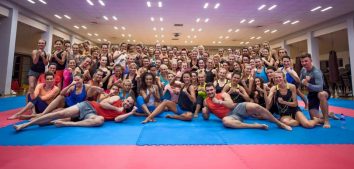
Pulse – the determinant of training load
Kamil Rajczak is the author of today’s post. Enjoy!
In order to pursue the goals we set, we must implement the plan we had arranged. In case of sport goals, this plan is largely about aspects related to training. It describes such features as frequency, character, duration, intensity, etc. For example, while building muscle we do not lift random weight but only a specific value which had been planned before. Similarly, when developing strength, our training can’t be accidental, and should be characterized by specific loads.
In endurance sports, the intensity of performed work is mainly monitored on the basis of pulse. It is divided into zones (the number of zones depends on the concept of division), the effort carried out in a specific zone is characterized by different intensity, and thus leads to a different effect.
For example:
zone 1 – very light effort
zone 2 – light effort
zone 3 – moderate effort
zone 4 – intense effort
zone 5 – maximum effort
These zones are based on the maximal pulse calculated from the following equation:
HRmax = 220 – age
Once you’ve calculated your maximal pulse, you can calculate the percentage of pulse zones. The values below correspond to the zones mentioned before:
zone 1 – 50-60 %
zone 2 – 60-70 %
zone 3 – 70-80 %
zone 4 – 80-90 %
zone 5 – 90-100 %
However, the problem is that the formula for maximal pulse is hardly ever true. Even if it is accurate in our case then the percentage division into zones is not the same for everyone. This leads to the situation where the training performed according to such zones is either not intense enough or too intense in relation to our assumptions. As a result, although our training is planned correctly, it is not effective due to wrong intensities. The training stimulus may be insufficient to enforce adaptive changes leading to sports development. On the other hand, poorly defined training loads may exceed the adaptive capacity of the body, and thus lead to more frequent occurrence of injury or overtraining.
This problem is confirmed by people who go to performance tests. They signal, for example, that they are not able to finish a given workout, even though in its assumption it should be a smooth run. In other cases, they describe that they are not able to train at such a high pulse as other people the same age. In yet another example, they note pulse values that are eg. 20 beats/ min. higher than they would be according to the formula.
Each person is different, and therefore it is impossible to create a formula that in each individual case would give us highly precise information. The results are only estimates and as it has already been noted, they rarely reflect reality. The method of precise determination of training loads is an objective examination of the body’s response to the given effort. This happens during performance tests.
In the case of a performance test, the pulse zones are determined on the basis of the physiological response of an individual to the effort, which is reflected by the dynamics of changes of particular parameters measured during the test. This allows for an objective determination of zones with very high accuracy. In training practice, we can be confident that we work with correct loads and we expose the body to the exact stimuli we have set.










Comments No Comments
Join the discussion…